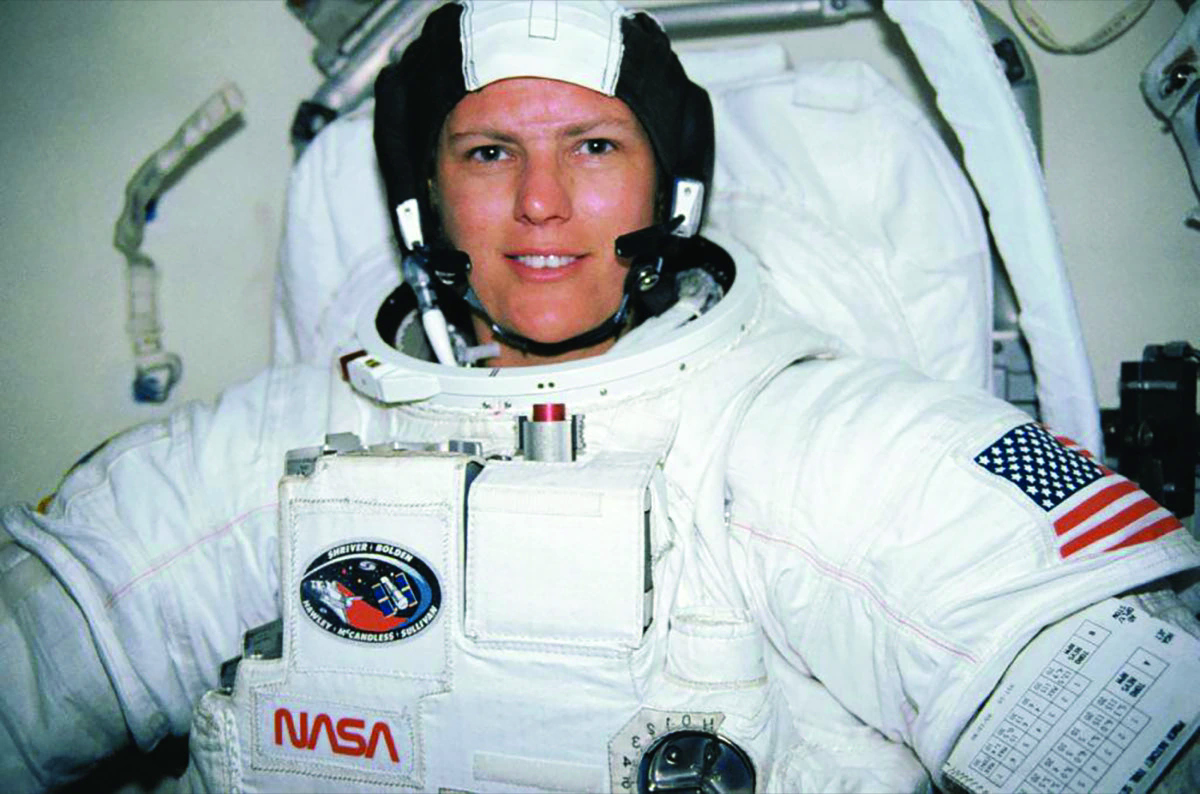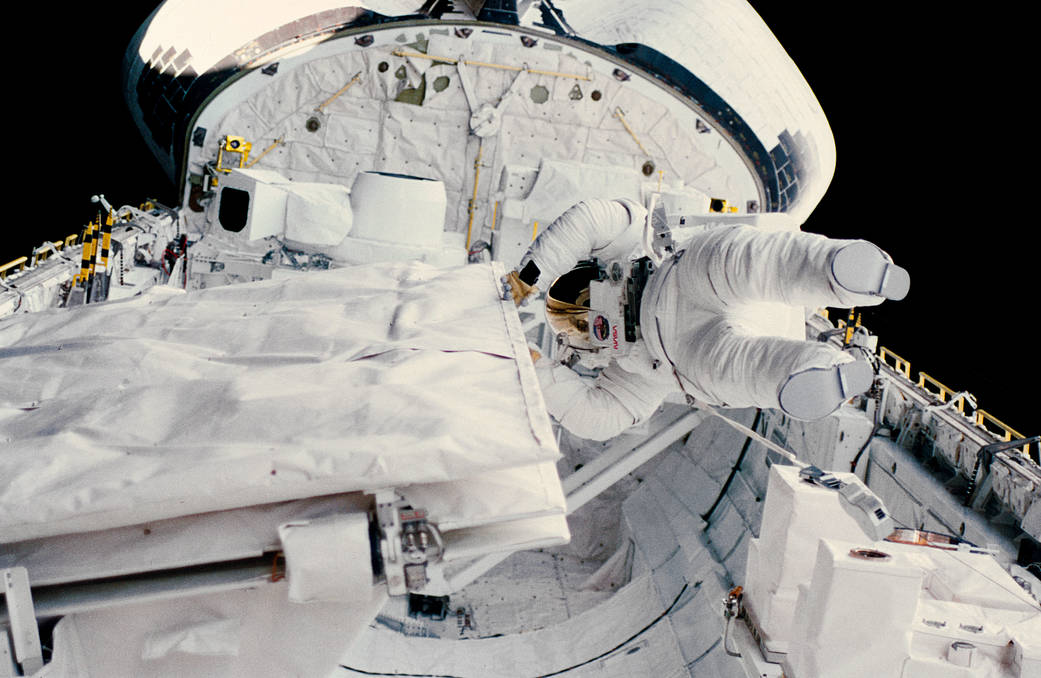
When we think of explorers, it is common to think of phrases such as “plumbing new depths” or “scaling new heights,” but how many individuals can both expressions be used to literally and accurately describe their achievements? Such an individual is Irish American Dr. Kathyrn Dwyer Sullivan.
Kathyrn Sullivan was born in Paterson, New Jersey, to Donald Paul Sullivan and his wife Barbara (née Kelly). Sullivan’s grandfather had immigrated from Lauragh on the Beara Peninsula in County Kerry. She chose her middle name Dwyer to honor her maternal grandmother, who she lost as a young child. The family moved to the San Fernando Valley in California, where her father worked in the aerospace industry for a firm that was to become a major NASA contractor. If that itself did not foreshadow Kathyrn’s future as an Astronaut, she was a first-grade classmate with Sally Ride, the first American woman in space. One could see her future in the stars. Sullivan has stated that she was always asking as a child, “how does it work?” and recalled how she once asked for a mechanical toy not because of what it was but to figure out how it could move as it did.
Sullivan went to the University of California, Santa Cruz (UCSC), initially as a language major planning on a career in foreign service. The university required that humanities students take three science classes. Sullivan chose courses in marine biology, topology, and oceanography, which struck a chord with her innate curiosity. Sullivan would earn her bachelor’s degree in Earth Sciences from UCSC and her Ph.D. in Geology from Dalhousie University in Halifax, Nova Scotia.
When Sullivan visited her family for Christmas in 1976, her brother Grant, an aerospace engineer and corporate jet pilot, told her that NASA was recruiting for a new group of astronauts; he had applied and encouraged Kathryn to do so. While her brother was unsuccessful, Kathryn was accepted (along with previous school classmate Sally Ride) into the first American astronaut group to contain women; being an astronaut would be Sullivan’s first job after leaving school.

Dr. Sullivan would be a crew member on three Space Shuttle missions: STS-41-G in 1984, STS-31 in 1990, and STS-45 in 1992. It was her first flight that she is best remembered, for as a member of mission STS-41-G Sullivan would become the first American woman to walk in space. She would spend over three hours outside the shuttle performing various tasks, including testing the Manned Maneuvering Unit (MMU), which allowed astronauts to fly freely in space. However, Dr. Sullivan has said she takes the most pride in a later mission, the STS-31 mission in 1990, where she and fellow astronaut Bruce McCandless deployed the Hubble Space Telescope.
Dr. Sullivan retired from NASA after logging over 532 hours in space, including more than 22 hours on three spacewalks. After leaving NASA, Sullivan served as the Assistant Secretary of Commerce for Environmental Observation and Prediction and later as the National Oceanic and Atmospheric Administration (NOAA) Administrator from 2014 to 2017.
Dr. Sullivan was not finished making history and breaking barriers. Dr. Kathryn Sullivan made history on June 7, 2020, by becoming the first person ever to visit both space and the deepest point in the ocean. She made a dive into the Challenger Deep, the deepest point on Earth, located in the Mariana Trench in the Pacific Ocean. At a depth of 35,853 feet, Sullivan spent several hours exploring the ocean floor and collecting samples. Amidst all these activities, Dr. Sullivan has not lost touch with her Irish connection. Sullivan became involved with the Ireland-U.S. Council for Commerce and Industry, which works to strengthen economic
ties between the two countries. Dr. Sullivan also served as the chair of the board of trustees for the Woods Hole Oceanographic Institution, where she helped establish a partnership with the Marine Institute of Ireland.
Dr. Kathry Dwyer Sullivan is yet another example of a ground-breaking Irish American whose example should inspire future generations.
March is Irish American Heritage Month.